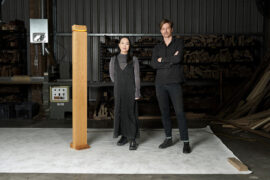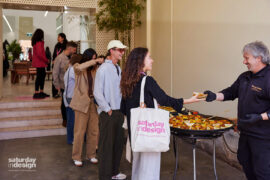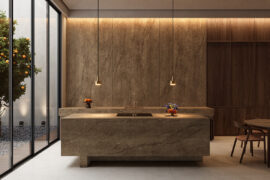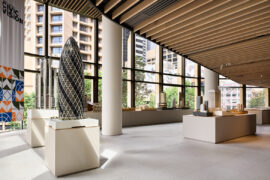The same humanistic design formula that first got Doo-Wop noticed in the ’50s comes through like never before in the latest brass, copper and stainless steel versions of the pendant.
There is a pool of design brands and designers who claim that their work is centred on the human experience. But, among that pool, only a handful has really walked the talk. Louis Poulsen is one of them, and it’s got the products to show for it.
Since its debut in the lighting business in the early ’20s, Louis Poulsen has firmly stood by its vision of designing to shape light for the right place and the right time of day. Over the years, that noble vision has translated, effortlessly, into practical factors such as adaptability and flexibility in some of the most visually compelling lamps the industry has ever seen, including the iconic PH by Poul Henningsen, the Patera by Øivind Slaatto and, more recently, the Yuh by GamFratesi.
But Louis Poulsen isn’t just about beautiful lamps and famous guest designers. There’s one other thing that imbues what the brand does with so much meaning, and that’s its family of craftspeople in Vejen, Jutland, who bring all of its lighting products to life by hand.
Among the latest creations to leave Louis Poulsen’s state-of-the-art factory in Vejen is Doo-Wop, a pendant from the ’50s that made its long-awaited comeback five years ago. Designed in partnership with the Danish Navy Buildings Department, Doo-Wop, which became affectionately known as the Navy Pendant, was installed in many of the organisation’s premises such as its canteens and offices, and even garnered praise from outside the military for its unique lighting properties and utility.
Each of Doo-Wop’s two reflectors may serve a different purpose – the white-lacquered, cone-shaped inner reflector directs light softly downward while the sculptural, hand-spun outer reflector directs and spreads light both upward and downward. But they have the same goal, which is to create an ambience that’s pleasing to people and their senses.
The distinct shape of Louis Poulsen’s Doo-Wop was a defining one during the late ’40s and all throughout the ’50s. Its sensual curves recalled the stylised silhouette of Christian Dior’s post-war New Look, which, designed in 1947, comprised the Bar jacket – a morning coat cinched at the waist – and a pleated skirt that flared out. And like how the New Look perfectly accentuated a woman’s figure, the Doo-Wop enhanced the lighting experience in the spaces it adorned, making the pendant stand out for all the right reasons.
The new Doo-Wop models get extra style points for their elegant appeal, featuring polished outer reflectors that are shaped from solid sheets of brass, copper and stainless steel. And true to Louis Poulsen’s humanistic design approach, every shade is turned by hand in Vejen before being bent slightly around the edges to achieve its signature optical volume.
To give those pendants even more character, the surfaces of the brass, copper and stainless steel models are intentionally left untreated. This will allow them to develop a unique patina over time so no two lamps will ever look the same.
Good design is timeless, especially when it’s centred on humanising, through the hands of humans, the spaces where people connect. And that, exactly, is the endearing formula that has made the lamps of Louis Poulsen such as the Doo-Wop so relevant and desirable even after so many decades.
INDESIGN is on instagram
Follow @indesignlive
A searchable and comprehensive guide for specifying leading products and their suppliers
Keep up to date with the latest and greatest from our industry BFF's!

London-based design duo Raw Edges have joined forces with Established & Sons and Tongue & Groove to introduce Wall to Wall – a hand-stained, “living collection” that transforms parquet flooring into a canvas of colour, pattern, and possibility.

AHEC’s KEEP exhibition at Cult Sydney sees six Australian architects craft lasting furniture pieces, on view until 4th October.

Collingwood pulsed with energy at Saturday Indesign 2025, where talks, launches and activations spilled from showrooms into the streets.
The internet never sleeps! Here's the stuff you might have missed

Cosentino introduces Éclos®, a new mineral surface brand featuring zero crystalline silica, high recycled content and Inlayr® technology that brings 3D layered realism to design.

Civic Vision, a major exhibition showcasing the global work of Foster + Partners, has officially opened in Sydney.